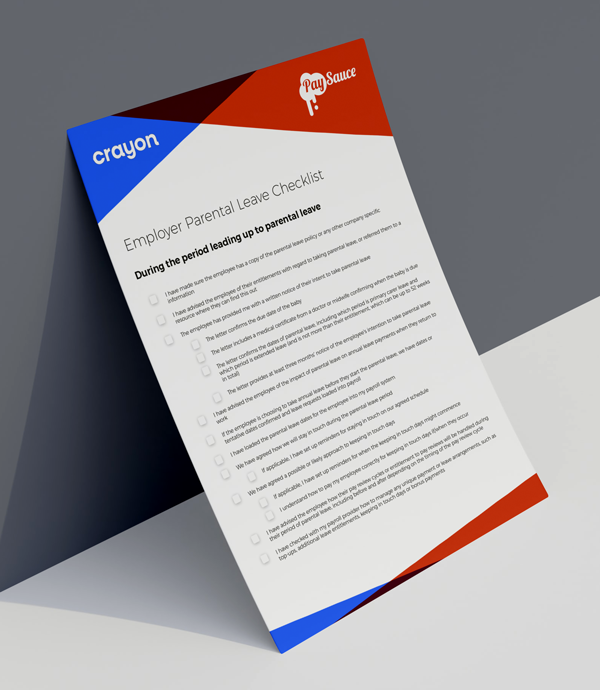Parental Leave
Job Protections
This is a guest collaboration series with our friend Stephanie Pow from Crayon - she's building the first home for money and parenthood in New Zealand, helping parents navigate the unique financial puzzles they face so they can be the parents they want to be.
This part of the series covers what your employees are entitled to, so you’re aware of your obligations as an employer.
Protection from discrimination
Employers can’t discriminate against their pregnant employees (or employees they think might become pregnant!).
The Human Rights Act 1993 prohibits discrimination on the grounds of sex, which includes pregnancy and childbirth. It also makes discrimination on the grounds of family status unlawful, which includes having the responsibility for care of children. The Parental Leave and Employment Protection Act 1987 also prohibits an employer from terminating the employment of any employee by reason of pregnancy or because they indicated that they wish to take parental leave.
In short: employers can’t disadvantage their employees during employment because they are pregnant, nor fire them for being pregnant.
Job protection provisions
As an employer, you need to keep your employee’s role open for them unless you determine that they hold a key position or a redundancy situation occurs.
If the role can’t be kept open because it’s a key position or it is made redundant, there is a ‘period of preference’ of 26 weeks after the employee’s parental leave finishes. That means if a role opens or becomes available that is similar to the employee’s original role, it must be offered to them first.
Key position
The law requires if an employee takes four weeks or less of parental leave, they are able to return to the same position (after all, it’s no different to taking a four-week holiday, except for the sleepless nights!).
If an employee takes more than four weeks of parental leave, then there is a legal assumption that the employee can return to the same role unless they occupy a key position for which a temporary replacement is not reasonably practicable. Whether an employee holds a key position is determined based on their role and your business, including the size of your business, the skills involved, how easy it would be to get someone to cover their role, etc.
Restructures and redundancy
You must include employees who are on parental leave in processes such as change proposals and restructures that impact their role. You need to give your employee the proposal, provide them with enough information to be able to comment meaningfully on the proposal and consider their feedback before making a decision.
In any proposal to disestablish a position, you need to have genuine reasons, conduct a fair process and act in good faith. Although employers can make employees who are on parental leave redundant, you have to meet a high threshold of having ‘no reasonable prospect’ of appointing the employee to a position. This includes looking for suitable redeployment to another position if their old role is disestablished.
Not being able to keep a key role open can be a challenging situation for both employers and employees. Redundancies can be even harder. It’s our view that you should take expert advice on these matters if you find yourself in this position - especially for smaller employers who don’t have HR/People & Culture functions. You want to make sure you do right by your employee and your organisation.
 Stephanie Pow
Founder & CEO - Crayon
Stephanie Pow
Founder & CEO - Crayon
 Jessica McLean
CPO - PaySauce
Jessica McLean
CPO - PaySauce


